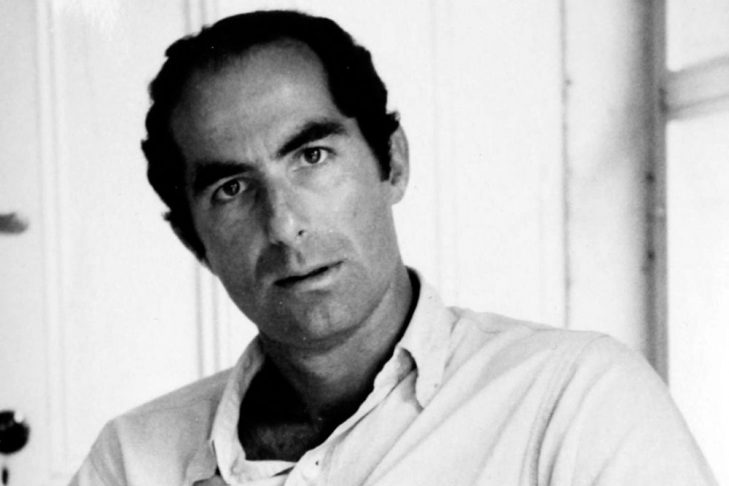Philip Roth, one of the titans of American letters, died last week at the age of 85, leaving behind a complicated legacy bound up in 27 novels, several volumes of short stories and two memoirs. His Washington Post obituary proclaimed, “His lifelong themes included sex and desire, health and mortality, and Jewishness and its obligations—arguably his most definitive subject, given the controversy surrounding his earliest works.”
The seeds of that controversy were sown in 1957 when Roth published a short story called “Defender of the Faith” in The New Yorker. The story centers on a teenage soldier in World War II trying to curry favor with a sergeant who is also Jewish. One Jewish activist called the story, “an ugly piece of anti-Semitic literature.” An Orthodox rabbi from Far Rockaway in Queens was so upset he wrote to the Anti-Defamation League asking, “What is to be done to silence this man? Medieval Jews would have known what to do with him.” As Josh Lambert, academic director of the Yiddish Book Center, wrote in Jewish Currents, “Note the passive voice and the assumption that in America, it might be possible to impose a cherem, excommunication, on a Jew like Roth the way the Amsterdam had been able to do to Spinoza.” But this was America—a place where Jews were not even remotely excommunicated and could win prizes for their seemingly blasphemous work.
At 26, Roth won the first of two National Book Awards for his short story collection, “Goodbye, Columbus.” Among the characters that readers meet there is Brenda Patimkin, a student at Radcliffe who comes from a wealthy family living in a tony New Jersey suburb. Many thought that through Brenda, Roth had introduced the anti-Semitic stereotype of the “Jewish American princess” into public discourse. The writer Vivian Gornick was among the first to attack Roth for his misogyny. She said that, “If in [Saul] Bellow misogyny was seeping bile, in Roth it was lava pouring forth from a volcano.”
Dara Horn, a Jewish-American novelist, published a recent op-ed in The New York Times in which she cited Roth’s three favorite topics as Jews, women and New Jersey—specifically Newark, where Roth was born and raised. “All remain socially acceptable targets of irrational public mockery,” wrote Horn, “and Roth was a virtuoso at mocking the combination of all three.” She went on to assert that Roth’s caricatures of women and others were the result of a lack of curiosity. “It shows up again in Roth’s religious characters, his Israeli characters, his non-Jewish characters, his anyone-who-isn’t-him characters. That’s why Brenda and the many other Jewish New Jersey women in his books, ostensibly so close to home, struck me as so unfamiliar. I didn’t know these women at all because neither did he.”
In 1969, Roth was catapulted into literary fame with the publication of “Portnoy’s Complaint.” In that novel Roth invented Sophie Portnoy, and the myth of the suffocating Jewish mother was born. Once again rabbis protested in letters and on pulpits. Gershom Scholem, a distinguished scholar of Jewish mysticism, skewered “Portnoy’s Complaint. ” Writing in Israel’s English daily Ha’aretz, Scholem called the book “revolting” and placed it in the same league as the virulently anti-Semitic “Protocols of the Elders of Zion.” He further declared, “This is the book for which all anti-Semites have been praying.” The critic Irving Howe was not a fan of the book either. “The cruelest thing anyone can do with ‘Portnoy’s Complaint,’” wrote Howe, “is to read it twice.”
Roth, however, had his literary fans. Saul Bellow, whom Roth met in 1955 while studying for a master’s degree in English at the University of Chicago, was an admirer. When Roth’s career took off, he was often put in the company of Bellow and the great short story writer Bernard Malamud. Bellow once remarked that critics often thought of the Jewish literary triumvirate as “the Hart Schaffner & Marx of American letters.” Roth and Bellow were also placed in the company of John Updike, all of them highly talented, white male fiction writers of the mid-20th century. Bellow would go on to become a Nobel laureate, something that eluded Roth.
But Roth went on to contradict F. Scott Fitzgerald’s famous dictum that there are no second acts in American lives. Roth’s prodigious output of seven novels after his 60th birthday included “American Pastoral,” for which he won a Pulitzer Prize. By the end of his career, his novels had addressed wide-ranging Jewish topics that included Israel, the Holocaust and anti-Semitism. Roth publicly retired from writing in 2012, abandoning a monastic-like routine of writing every single day for eight or more hours in his 18th-century Connecticut farmhouse. He lived alone after his acrimonious divorce from the British actress Claire Bloom.
In his 2000 profile of Roth, The New Yorker editor David Remnick wrote what might be considered an epitaph of sorts for the author: “His sin was simple: he’d had the audacity to write about a Jewish kid as being flawed. He had violated the tribal code on Jewish self-exposure.”



